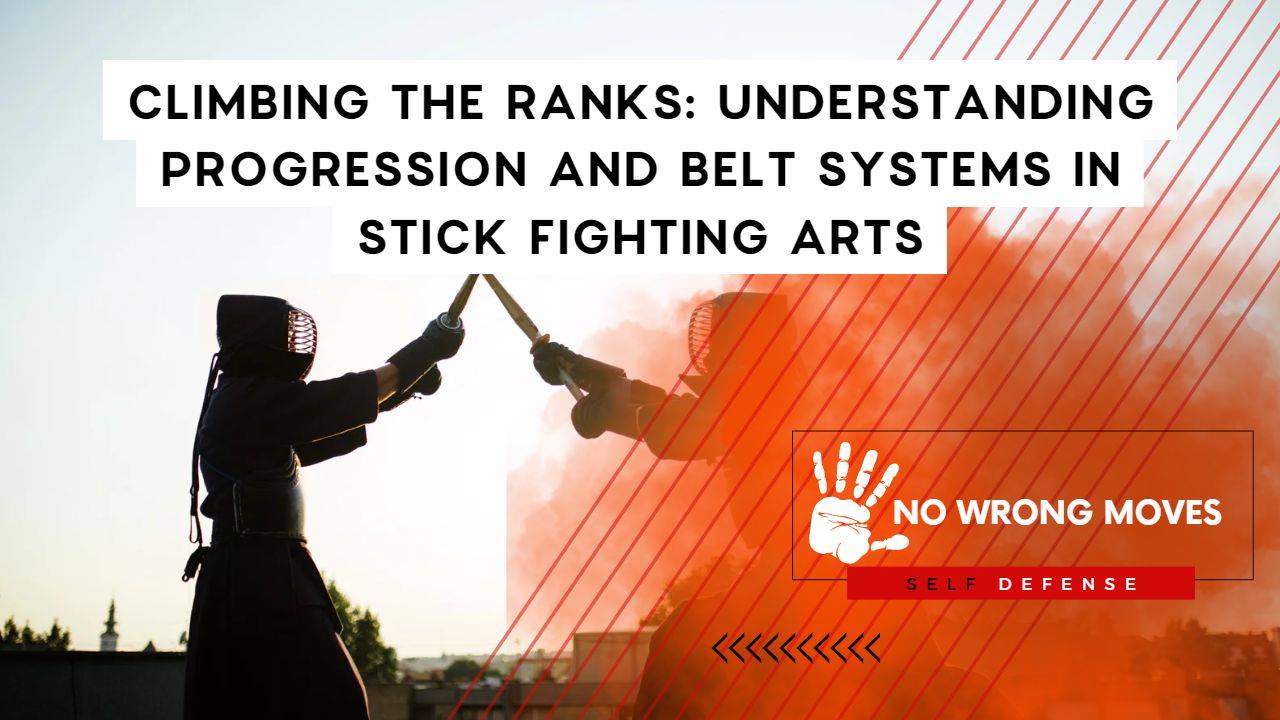
In the world of martial arts, progression and rank are important factors that serve as indicators of an individual's skill level and experience. This is also true for stick fighting arts, where a student's proficiency is measured through various ranking systems.
This article aims to provide an in-depth understanding of the progression and belt systems used in stick fighting arts.
Belt Systems in Stick Fighting Arts

Similar to other martial arts disciplines, stick fighting arts have their own belt systems to determine a student's level of proficiency. These belt systems are a way to measure a student's skills, knowledge, and dedication.
A belt system typically includes a series of colors and ranks that represent different levels of achievement.
The belt system used in stick fighting arts varies depending on the style or school. Some styles may have more or fewer belts, while others may use a different color scheme.
However, the most common belt system in stick fighting arts includes the following colors: white, yellow, orange, green, blue, brown, and black.
- White Belt: This is the starting rank for all beginners. It represents a student's initial knowledge of the basics of stick fighting.
- Yellow Belt: The yellow belt signifies a student's progress in mastering the basic techniques and movements of stick fighting.
- Orange Belt: This rank represents a student's increased knowledge and proficiency in more advanced techniques and strategies.
- Green Belt: A green belt is awarded to students who have demonstrated a high level of skill and knowledge in the art of stick fighting.
- Blue Belt: The blue belt signifies an even higher level of proficiency and is awarded to students who have shown exceptional dedication and mastery of stick fighting techniques.
- Brown Belt: A brown belt is awarded to students who have achieved a high level of skill and knowledge in stick fighting. This rank is usually reserved for advanced students who are nearing black belt level.
- Black Belt: The highest rank in stick fighting arts is the black belt. It represents mastery of the art and is the culmination of years of dedication, training, and hard work.
It's important to note that belt progression is not always linear or strictly based on time spent practicing.
Advancement is based on a combination of factors including skill level, knowledge of the art, dedication, and attitude. Some students may progress faster or slower than others, depending on these factors.
In addition to the colored belt system, some stick fighting arts may also have a dan or degree system.
In this system, once a student reaches the level of black belt, they can continue to progress through higher degrees, such as first dan, second dan, and so on. Each degree represents a higher level of proficiency and mastery of the art.
Progression in Stick Fighting Arts

Advancement in stick fighting arts is not solely based on the color of the belt a student wears. Progression is also determined by the student's skill level, knowledge, and understanding of the art.
Students who show exceptional skill and knowledge may be promoted to a higher rank even if they have not completed the required training time for that particular belt.
Progression in stick fighting arts can be divided into two categories: technical proficiency and teaching ability.
Technical proficiency refers to a student's skill level in performing stick fighting techniques, while teaching ability measures a student's ability to instruct and mentor other students.
In stick fighting arts, students must achieve a certain level of technical proficiency before they can move up to the next rank.
The level of proficiency required varies depending on the style or school. In addition to technical proficiency, students must also demonstrate an understanding of the art's history, philosophy, and culture.
Teaching ability is also an important factor in the progression of stick fighting arts. Students who have achieved a high level of technical proficiency and have shown exceptional teaching ability may be promoted to a higher rank with the permission of their instructor.
Conclusion

The belt system and progression in stick fighting arts serve as a roadmap for students to measure their progress and achievement. It provides a clear path for students to follow and a goal to strive for.
However, it's important to note that the belt system is not the only measure of a student's skill and knowledge in stick fighting arts. A student's dedication, hard work, and understanding of the art's philosophy and culture are also important factors in their progression.
Read up about great Bo Staff instruction here!
[author-box-jpx-fitness]
